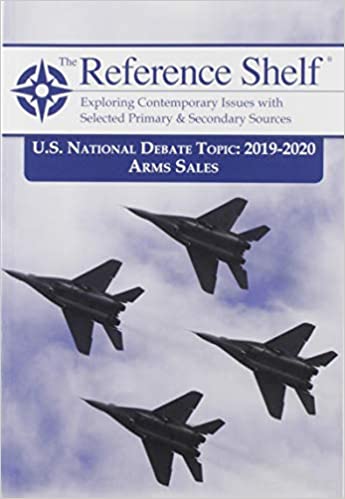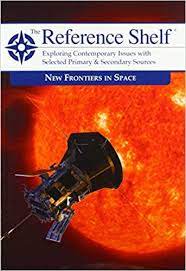Search Results: Returned 17 Results, Displaying Titles 1 - 17
-
-
2018., Grey House Publishing Call No: 070.4 30973 Availability:1 of 1 At Location(s)Click here to view Series Title: Reference shelf Volume: v. 90, no. 2.Summary Note: This thought-provoking volume unpacks the fragmented state of news feeds and journalism, and the loss of shared news narratives in the U.S., while also exploring the effects of media manipulation and disinformation online. -- https://hw-wilson.myshopify.com/products/9781682178652.
-
-
2018., Grey House Publishing Call No: 973 AME Availability:1 of 1 At Location(s)Remote access available: onondaga Series Title: The Reference Shelf Volume: volume 90, number 5Summary Note: The American Dream explores the sturdiness of this idea of The American Dream in 2018. Is the American dream of upward mobility accessible in a society so fragmented and economically unequal? Does the American Dream still exist in a country experiencing an anti-immigration trend? Have economic policies had an impact on American striving? This issue also explores the relationship between education and jobs, technological displacement of workers, downward mobility among certain groups, labor mobility and home ownership as indicators of the health of the idea of the American Dream.
-
-
2019., Grey House Publishing Call No: 335.4 REF Availability:1 of 1 At Location(s)Remote access available: onondaga Series Title: The Reference Shelf Volume: volume 91, number 3Summary Note: This volume of The Reference Shelf focuses on the National Forensics League’s (NFL) 2019-2020 National Debate Topic, Arms Sales. America’s arms-sales policy directs both commercial sales (DCS) and foreign military sales (FMS) and can be viewed as either a key tool of foreign policy and national security or as a practice that results in the opposite of its intent: increased terrorism, instability, and advanced military technology ending up in the hands of hostile forces. Does the current policy encourage nation-building and maintain military balance among nations? Would a reduction in arms sales by the United States simply be filled by a competing power such as Russia or China? Are human-rights violations overlooked when selling arms to countries that are strategically important to U.S. defense? What would be the effect on the U.S. economy if arms sales are reduced? These are some of the issues that will be raised in this important debate.
-
-
2018., Grey House Publishing Call No: 303.48 ART Availability:1 of 1 At Location(s) Series Title: The Reference Shelf Volume: volume 90, number 4.Summary Note: This volume explores the latest thinking around the ethics and governance of Artificial Intelligence. Where will robots make the most useful impact in society? As computers become more adept at mimicking human behavior and problem solving, what issues will be solved or created by new forms of artificial intelligence? It covers the scientific, economic and social implications of advanced artificial intelligence systems in human life.
-
-
2021., Grey House Publishing Call No: 796.043 COL Availability:1 of 1 At Location(s) Series Title: Reference shelf Volume: v. 93, no. 4.Summary Note: Where should America draw the line between professional and student athletes? This volume examines a variety of scandals and controversies in the college sports world, including admission scandals and the methods that recruiters and school administrators use to find, sign, and groom players. While some celebrate college sports and its role in producing players who go on to play at the professional level, others argue that college athletics denigrates the role that universities and colleges are supposed to play and that too often student athletes are exploited. Other critics argue that the entire college sports industry costs too much, resulting in rising tuition and college costs for students who receive little benefit from their institution's sporting activities. This volume also looks at whether or not college athletes deserve some portion of the more than $1 billion industry that they create. This volume begins with a preface; an overview of the debate including explanation of the risks and rewards of being a student athlete, as well as the challenges that college sports face. College Sports includes articles, documents, and other literary works that fall into five topics: Educational Environments, The Cost of College Athletics, Lives on the Line, Access to Athletics, Professionals and Amateurs. Together, this information provides thoughtful, comprehensive coverage of college sports and how the discussions surrounding it have come to be such pressing debates in modern times. - Publisher.
-
-
-- US national debate topic, 2020-2021.2020., Grey House Publishing Call No: 364.973 NAT Availability:1 of 1 At Location(s)Remote access available: onondaga Series Title: Reference Shelf Volume: volume 92, number 3.
-
-
2019., Grey House Publishing Call No: 321.8 REF Availability:1 of 1 At Location(s)Remote access available: onondaga Series Title: The reference shelf Volume: 4
-
-
2020., Grey House Publishing Call No: 364.15 HAT Availability:1 of 1 At Location(s)Remote access available: onondaga Series Title: The Reference Shelf Volume: volume 92, number 1
-
-
2019., Grey House Publishing Call No: 629.4 NEW Availability:1 of 1 At Location(s)Remote access available: onondaga Series Title: The Reference Shelf Volume: volume 9, number 5
-
-
[2017]., Grey House Publishing Grey House Publishing Call No: 616.863 WIL Availability:1 of 1 At Location(s)Remote access available: onondaga Series Title: Reference shelf Volume: v. 89, no. 5Summary Note: In the modern world, physicians prescribe a multitude of medications, most derived from natural substances, to treat various bodily and mental disorders and some of the substances used also have a pleasurable neurological effect, creating a sense of euphoria, a tranquilizing effect, or intensifying alertness and focus. Over time, drug addiction and abuse has become a social justice and public health concern around the world.
-
-
-- Propaganda and misinformation.2020., Grey House Publishing Call No: 070.4 PRO Availability:1 of 1 At Location(s)Remote access available: onondaga Series Title: Reference Shelf Volume: volume 92, number 2.
-
-
-- Propaganda and misinformation.2020., Grey House Publishing Call No: 303.37 Gre Availability:1 of 1 At Location(s) Series Title: Reference shelf Volume: v. 92, no. 2.
-
-
-- In the 1920s[2014]., Grey House Publishing Call No: REF 973.914 MAR Edition: [First edition]. Availability:1 of 1 At Location(s)Remote access available: onondaga
-
-
-- In the 1940s[2015]., Grey House Publishing Call No: REF 330.973 MARS Edition: [First edition]. Availability:1 of 1 At Location(s)Remote access available: onondaga Summary Note: "A companion resource to the 1940 Census just released by the US National Archives, This is Who We Were, provides the reader with a deeper understanding of what life was like in America in 1940 and how it compares statistically to life today. Using both original material from the 1940 Census (reprinted here in a different color), readers will find richly-illustrated Personal Profiles, Economic Data, and Current Events to give meaning and depth to what life was like in 1940 America as the country was emerging from depression, but on the verge of war. Next, a wide range of data from the 1940 and 2010 Census are put side-by-side so users can quickly and easily see differences and similarities over these past 70 years. Background Information - Then & Now: Provides the reader with a framework to explore this interesting text including the Media Response to the 1940 Census and State Ranking Tables that compare the 1940 to the 2010 Census by 16 different data points. Individual cities are also ranked at the back of the volume. Personal Profiles: This section profiles 26 Americans whose lives were sandwiched between the Great Depression and World War II, undeniably a fascinating time in America's history. Each profile also offers interesting detail on the individual's community, not only where he or she worked, but where they lived, shopped, and schooled their children. When possible, profiles include original tables from the 1940 Census. For example, the story of an autoworker in Detroit, Michigan includes nine original tables from the 1940 Census, which are specific to Detroit in 1940. They are reprinted exactly as they appeared 73 years ago, and provide population statistics about Detroit's citizens including age, education, country of birth, and employment. Historical Snapshots: Examines the decade leading up to 1940 through a historical lens. What was going on in America? What new products were invented? What movies were popular? What clothing styles were fashionable? This fun, easy-to-read section also offers the "facts" in politics, social action and more. These snapshots bring to mind when Social Security checks were first distributed (late 1930s), when McDonald's first opened (1940), and hundreds more facts that help paint a picture of America in the years leading up to, thus influencing, results of the 1940 Census. Economy of the Times: Presents a wide range of economic data, including the prices of food, clothing, transportation and housing, typical salaries for dozens of jobs and so much more. This section provides a fascinating look at the economic picture of 1940 and how the engine that drives our economy has changed. For example, Economy of the Times shows that the average utility bill in 1939 was $23.66 A YEAR! All Around Us -What We Saw, Wrote, Read & Listened To: There is no better way to put your finger on the pulse of a country than to read its magazines and newspapers. This sections offers 50 original pieces - articles, comic strips, advertisements, and book excerpts - that influenced those Americans who made up the 1940 Census. This section offers a fascinating look at the current trends and issues facing the average American family from 1930-1940."--Publisher website.
-
-
[2013]., Grey House Publishing Call No: 330.973 MAR Edition: [1st ed.]. Availability:1 of 1 At Location(s)Remote access available: onondaga Summary Note: Takes a look at the decade in America when demonstrations were commonplace and traditional values were questioned and presents American history through the eyes and ears of everyday Americans. Representing all classes, dozens of occupations, and all regions of the country, this book includes 30 profiles of individuals and families--their life at home, on the job, and in their neighborhood--with lots of photos and historical images of the time, including the African American in Washington, D.C. who taught himself how to win a gold medal for weight lifting in the 1960s Olympics, to the Nashville country music record producer who signed Loretta Lynn, Patsy Cline, and Chet Atkins.
-
-
-- US national debate topic, 2022-2023.2022., Adult, Grey House Publishing Call No: 355.4 REF Availability:1 of 1 At Location(s) Series Title: Reference shelf Volume: v. 94, no. 3.Summary Note: "This edition of The Reference Shelf, focused on this year's National Forensic League (NFL) debate topic, will look at U.S. foreign policy with regard to emerging technologies such as artificial intelligence, cybersecurity, and biotechnology. While these new technologies offer economic and security benefits to those nations that have access to them, there is significant concern within the United States and among allied nations about how these technologies might be stolen, manipulated, and misused, creating potential security threats and impacting public welfare on a global scale. To address this, some have called for stronger international agreements, while others favor greater independence for the United States as a leader in global security and see value in establishing U.S. dominance in technological fields outside of an international framework. Drawing on articles and essays from both mainstream and alternative media, this edition of Reference Shelf provides a balanced selection of viewpoints to enable participants on both sides of this debate to successfully argue their positions."--
-
-
2021., Grey House Publishing Call No: 333.91 REF Availability:1 of 1 At Location(s)Remote access available: onondaga Series Title: The Reference Shelf Volume: volume 93, number 3


















